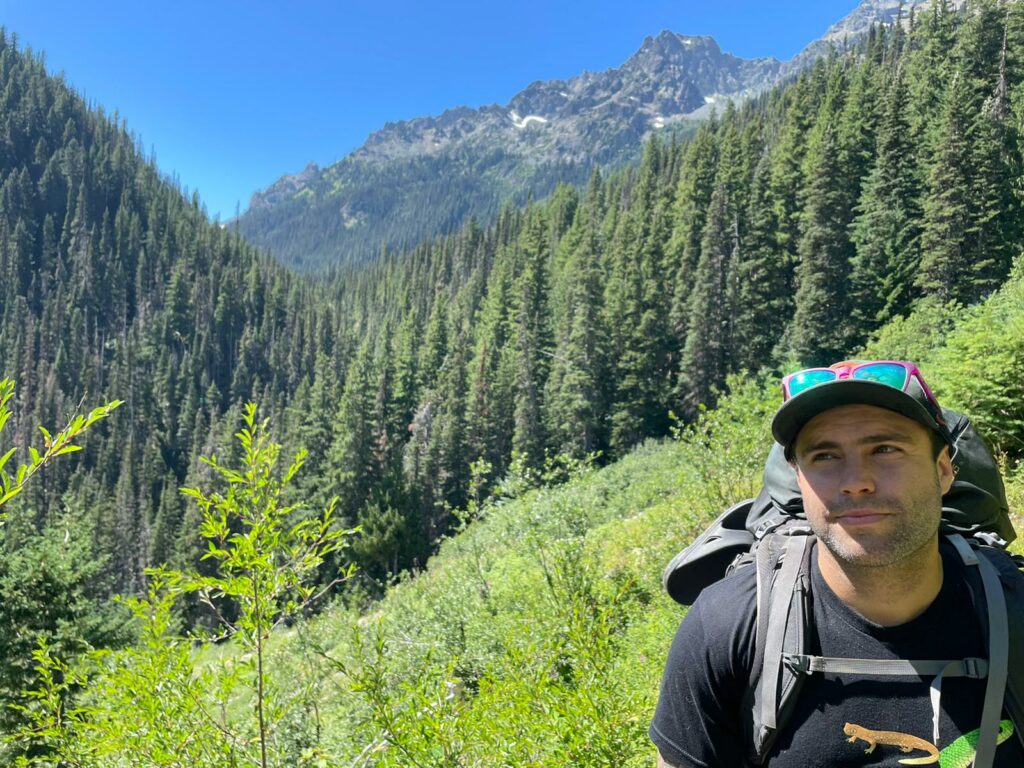We are pleased to introduce our upcoming guest, Christopher Cousins, a fourth-year PhD student in the Department of Fisheries and Wildlife, advised by Prof. Tiffany Garcia. Cousins is researching torrent salamanders, a family of small amphibians endemic to the Pacific Northwest.

The habitat for torrent salamanders stretches from the far north of California up through the Washington coast and includes distinct populations in the Cascade Range and the Oregon Coast Range. Torrent salamanders inhabit cold streams at relatively high altitude — the kind where few or no fish live, leaving the amphibians near or at the top of the local food chain. Such streams can be ephemeral, disappearing at times throughout the year and leaving salamanders vulnerable to desiccation. This problem is only expected to worsen as climate change further upends these water systems. Torrent salamanders are currently candidates for classification under the Endangered Species Act (ESA), the federal law which grants protections to threatened species. Logging presents another danger to salamander habitats, as reduced tree canopy cover can contribute to higher water temperatures. Under the ESA, officials could prohibit logging in buffer zones around small streams, granting salamander habitats the same protection as the larger streams where salmon live.
Chris’s work with salamanders takes many different forms. He has extensive experience in fieldwork, spending six months traveling throughout Oregon and Washington. He has used environmental DNA from water samples to detect torrent salamander populations in various streams. In another project, he collected DNA directly from approximately 150 salamanders. Chris performed both the lab work to process these samples and the bioinformatics analysis to assemble their DNA sequences. This summer, he plans to conduct a detailed survey of the streams of the streams in the H.J. Andrews Experimental Forest. The overarching goal of his PhD is to document the genetic diversity among torrent salamanders and characterize their population structure across the region, which he hopes will help inform the ESA decision-making process.

Chris remembers catching frogs and salamanders as a child – proof of his fascination with amphibians at a young age. His father was in the Navy, so the family moved around repeatedly, but Chris grew up mostly in Japan. Upon moving back to the US, he felt drawn to Oregon and enrolled at Lane community college before transferring to Oregon State to earn his bachelor’s degree as a first-generation college graduate. He remained at OSU for his graduate work due to the community of scientific mentors he had built. To hear more about his journey, what it is like to explore the Mt. St. Helens eruption zone, and what motivates him to work with this threatened species, tune in to KBVR 88.7 FM this this Sunday, Feb 19th, at 7pm.
